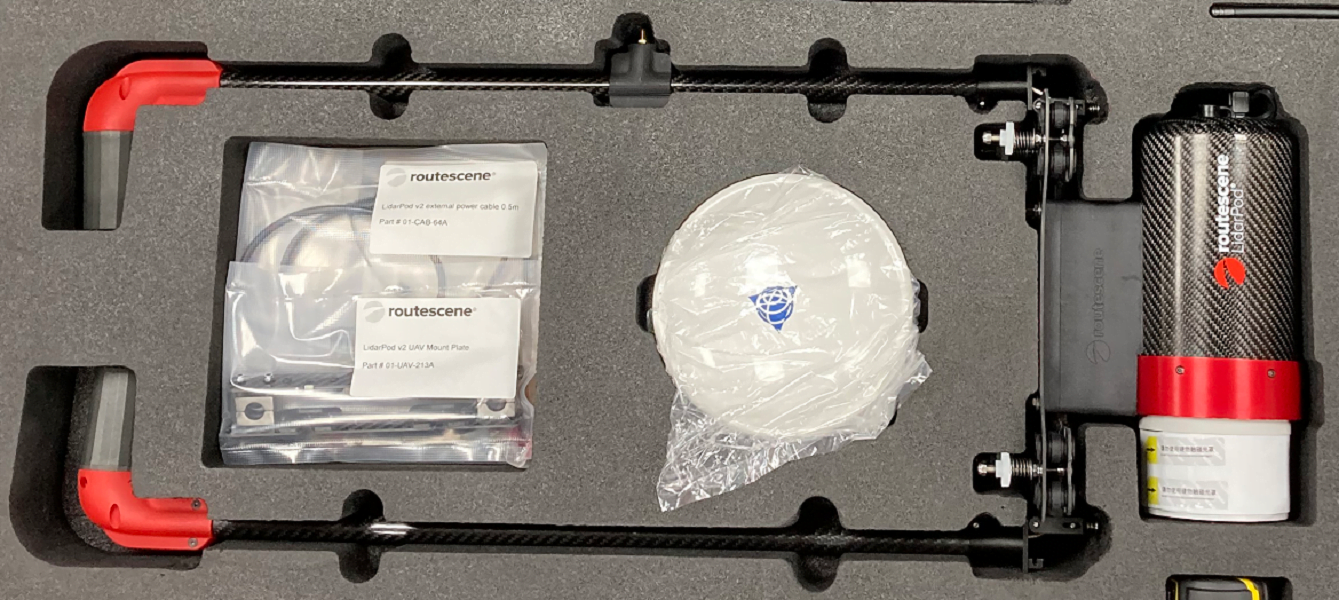New easy to deploy UAV LiDAR Systems design
Posted on July 18, 2023 in News
Routescene’s streamlined drone LiDAR Systems design has been enhanced for easy deployment. The aesthetically pleasing, sleek and clean lines of the LidarPod remain the same and we have made significant improvements to the design of the dual GNSS antenna, the antenna poles and the drone mounting system so they are easy to deploy. The speed of data download is substantially faster too.
Video: Watch animation of new design improvements
No assembly dual GNSS antenna and poles
The 2 GNSS antenna and antenna poles are now integrated into the LidarPod unit. Previously the antenna and poles were separate and required tools to assemble them onto the mounting system. Now the hinged, foldaway poles and antenna are attached and you simply straighten the hinges to click them securely in place. Simple to use and no tools are required.
An additional benefit of this new design is that the 2 antenna cables are already mounted ready for use. No assembly needed.
Article: Why do I need dual heading GNSS?
Fast drone mounting
The new drone mounting system design means it is easy and quick to mount the LiDAR System onto a drone. Previously you aligned clamps on the rails underneath the drone and tightened each clamp. We appreciated this was awkward due to the small size of the clamps and their location underneath the drone. Now, using 4 quick-release connectors, you simply slide the LidarPod onto a permanently fixed mounting plate on the drone and it is ready to fly. For extra security thumb screws are tightened to ensure the LiDAR System is robustly mounted.
Once the LiDAR System is mounted, all you have to do is plug in the power cable and switch the unit on ready for your survey.
Rapid data download
Data collected during the drone survey is stored on the internal solid state data storage in the LidarPod. Download of the data after the mission is now extremely fast via USB3. You can choose to undertake this using a web browser or by inserting a thumb drive into the LidarPod.



